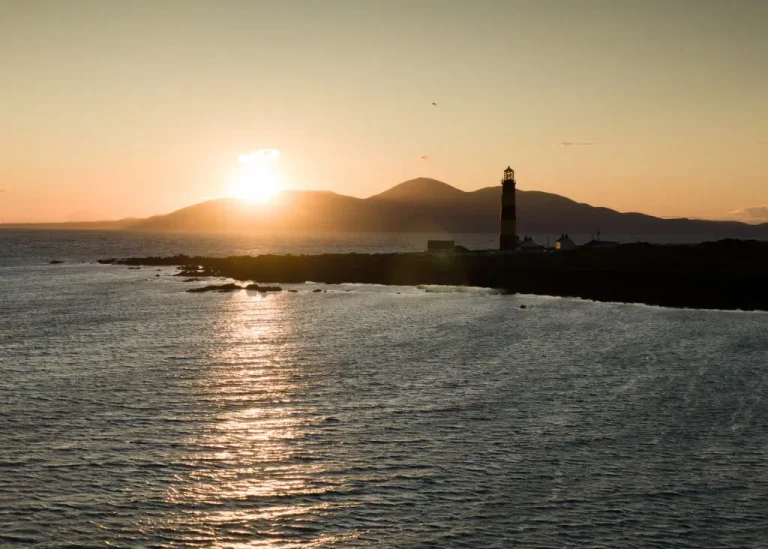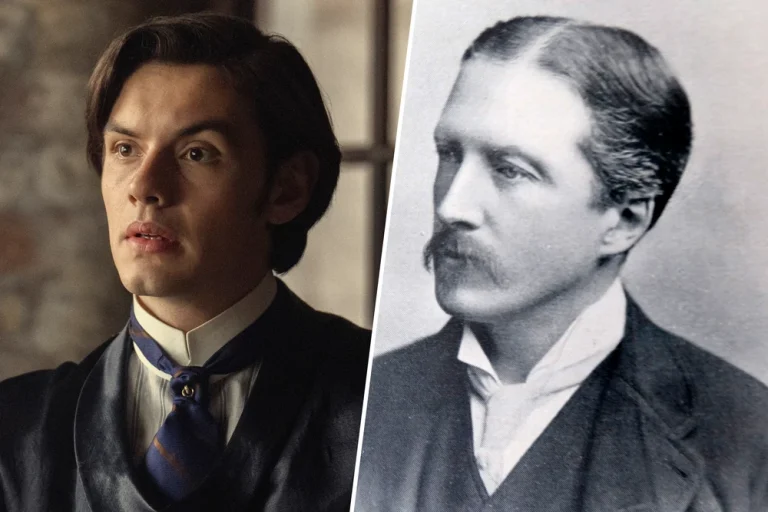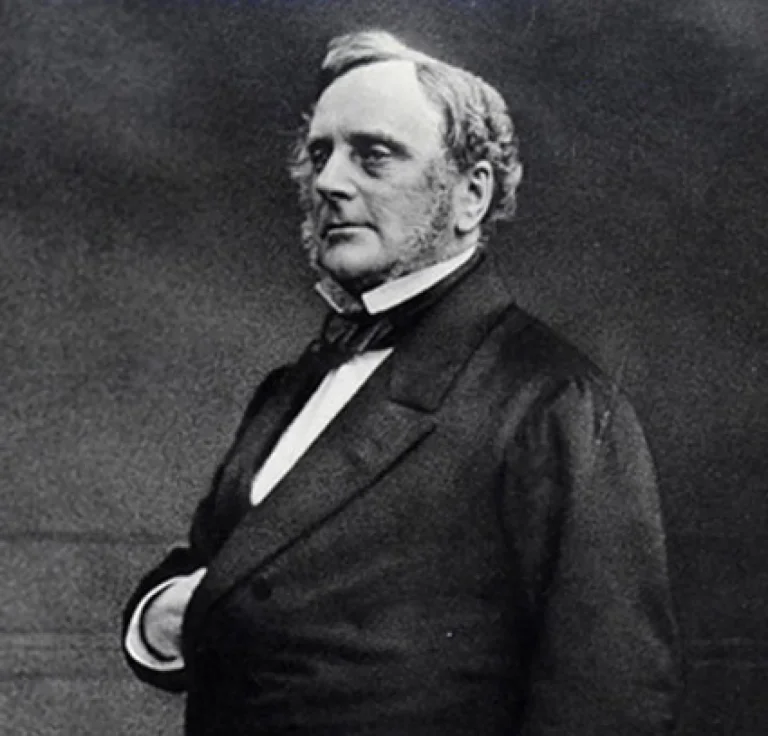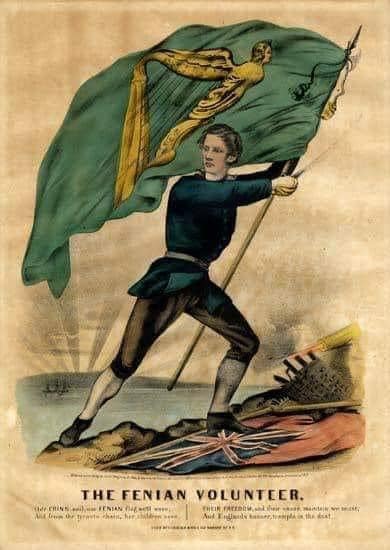
Listen close now, ye sons and daughters of the emerald sod, for the tale of the Fenians Irish is no gentle lullaby—it’s a thunderclap in the dead of night, a fist hammered against the chains of empire.
Picture it: the wind howling through the bogs of Kerry, carrying whispers of ancient warriors, the Fianna, those mythical giants who danced with wolves and wrestled the sea itself.
From their ghostly ranks rose the Fenians, not as faded legends, but as living firebrands, scorching the British yoke with gunpowder and grit. We’re talking Fenians Irish—the heartbeat of rebellion, the snarl in the throat of every paddy who ever spat at a redcoat.
And if you’re here chasing “fenians irish” through the digital mist, you’ve stumbled into the eye of the storm. Strap in, because this ain’t history from a dusty textbook; it’s the raw, whiskey-burn truth, poured straight from the barrel of betrayal and unbreakable will.
Who where the fenians?
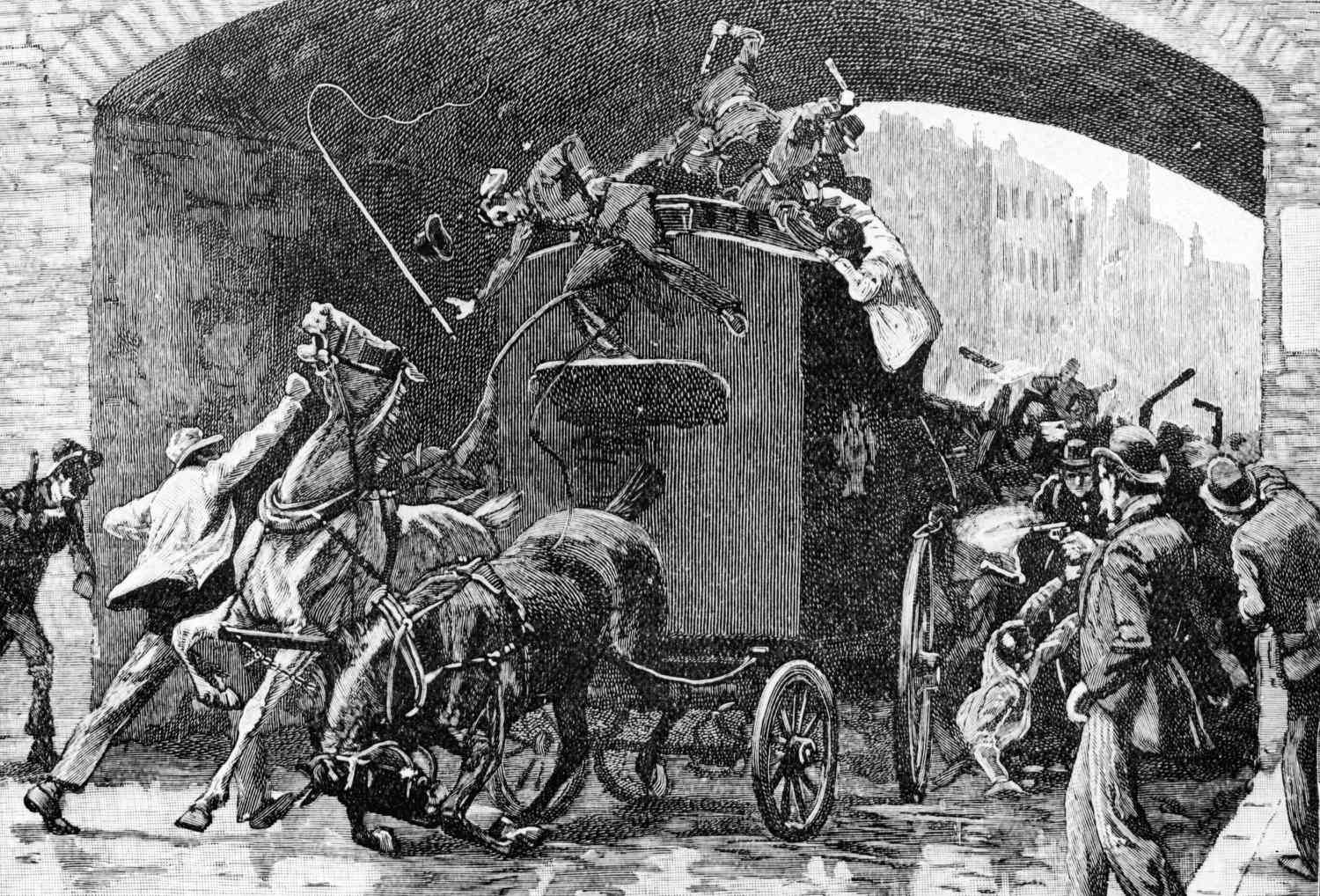
Ah, but where to begin with the Fenian Brotherhood, those lads who turned folklore into felony? Founded in 1858, born from the ashes of the Great Hunger that starved a million souls and scattered another to the winds, the Brotherhood was the American arm of a transatlantic fury.
John O’Mahony, a scholar with a rebel’s scar from ’48, named ’em after the Fianna—those legendary bands led by Finn McCool, slayers of giants and guardians of the green.
Across the pond, James Stephens lit the fuse in Dublin, birthing the Irish Republican Brotherhood (IRB), the secret society’s beating heart. They swore oaths in shadowed cellars: to wrench Ireland free from Britain’s boot, by ballot or by bullet. No half-measures. No kneeling. Just the cold steel of conviction.
How do you pronouce fenian?
Now, the Fenian pronunciation? Say it like you mean it: Fee-nee-an, rolling off the tongue like a curse or a prayer, depending on who’s listening.
It’s Gaelic grit in three syllables, a word that once evoked heroes and now, in some bitter corners, draws blood. But don’t let the slur-mongers fool ya—that’s their poison, not the truth. The Fenians were the people’s poets and pistols, the ones who dared dream of a republic while the landlords feasted on evictions.
In the gaslit streets of 1860s Dublin, the Fenians weren’t just plotting; they were poetry in motion. Their newspaper, The Irish People, spat defiance from every page—John O’Leary’s ink as sharp as a bayonet.
Funded by Yankee dollars from the Fenian Brotherhood, they smuggled arms, drilled in barns, and whispered of uprisings that would shake the throne. The Great Famine?
That was Britain’s deliberate dagger—potatoes rotting while ships full of grain sailed to England. A million dead, two million fled. The Fenians rose from that graveyard, vowing no more. They were the avengers of empty bellies, the ghosts of the dispossessed.
What was the 1867 fenian rising?
But empire don’t yield easy. The 1867 Rising? A spark in the powder keg that fizzled under rain and redcoats. Skirmishes in Tallaght and Stepaside, a desperate grab for Dublin Castle—crushed like a beetle under Wellington’s boot. Yet from those ashes, martyrs rose: the Manchester Martyrs, hanged for busting Fenian lads from a van. Allen, Larkin, O’Brien—three ropes, three nooses, but a thousand seeds sown in Irish soil. Their graves became shrines, their names anthems. “Fenians Irish,” the crowds chanted, fists raised like the sunburst on their Fenian flag.
What is the fenian flag?
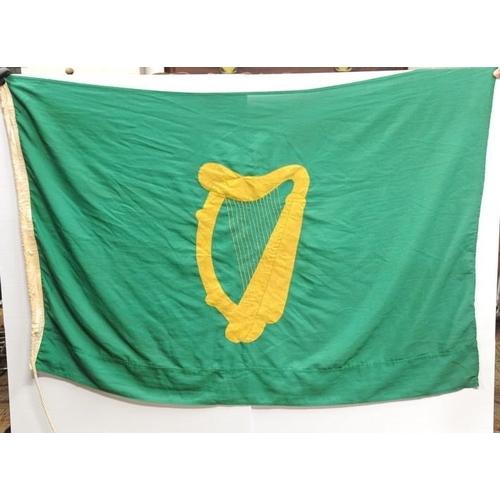
Speaking of that banner—ah, the Fenian flag, a rip-roaring riposte to the Union Jack. Green silk, stitched with 32 white stars for the counties of Ireland, striped like the Yankee flag that sheltered so many exiles.
Captured at Tallaght in ’67, now it hangs in museums, a tattered testament to defiance. Some flew the harp in gold on emerald, others the sunburst of ancient kings—symbols of a land undivided, unbroken. Wave it today, and you summon the specter of rebellion, a green gauntlet thrown at history’s feet.
Why, then, are Irish called Fenians? It’s the victors’ venom, twisted from pride to poison. Born of admiration for those warrior bands, the label stuck to every Mick with a grudge against the Crown.
By the 1870s, British rags slung it like mud: “Fenian scum,” “Fenian plots.” In the trenches of the Troubles, it became a sectarian shiv—Protestants hurling it at Catholics like a brick through a window.
But peel back the hate, and it’s honor: the Irish called Fenians because they carry the fire of Finn, the unquenchable thirst for freedom. It’s why, in Belfast bars or Boston pubs, a lad might grin and say, “Aye, and proud of it.”
Now, are Fenians Catholic? Aye, mostly—drawn from the potato-famine poor, the rosary-clutching masses ground under Protestant landlords. The IRB’s oath? “In the presence of God,” they swore, but the Church?
Oh, she turned tail faster than a hare from hounds. Bishops thundered from pulpits: “Hell’s not hot enough for Fenians!” Pope Pius IX damned ’em as oath-bound heretics.
Yet the faithful flocked anyway—faith in the tricolor outshining Vatican vetoes. Not all, mind: some Protestants joined the fray, brothers in the bond of liberty. But the rank and file? Catholic to the marrow, their rosaries rattling with rebel songs.
Is Fenian offensive?
Depends on the tongue wagging it. In the mouths of mates over pints, it’s a badge, a wink to the wild ones.
But spat from a loyalist’s lips in the Six Counties? It’s venom, pure and vile—a slur slathered in centuries of blood. UEFA fined Ajax fans in 2013 for “Fenian Bastards” banners at a Celtic match; in Scotland’s Old Firm derbies, it’s flung like confetti at a funeral. Offensive? To the bone, if wielded as a whip. But reclaim it, wear it like a thorn crown, and it becomes power—the oppressor’s curse turned warrior’s creed.
Fast-forward through the dynamite decades: the IRB’s “Invincibles” slashing Phoenix Park in ’82, bombs blooming in London like black roses.
The Fenian flame flickered but never died—fanning the Easter Rising in ’16, where Pearse and Connolly channeled Stephens’ ghost. From there, the handoff to the IRA: the Fenians vs IRA ain’t a versus at all, but a relay race through hellfire.
The Fenians lit the fuse; the IRA ran with the torch. IRB vets like Tom Clarke masterminded the GPO, their oaths echoing in every volley. The IRA? Born from Fenian loins, the flying columns of ’19-’21 that birthed the Free State. Differences? Tactics, times—Fenians dreamed transatlantic invasions, IRA bled in Irish ditches. But the goal? Same unyielding republic, same Saxon scalp to claim.
And what of the Irish Republican Brotherhood today? Ah, the old serpent sheds its skin but coils eternal. Dissolved in ’24 after the Civil War’s fratricide, echoes linger in Sinn Féin’s veins, in the ghosts of Óglaigh na hÉireann. Modern claimants pop like whack-a-moles—a “shadow government” in 2025, courts and councils in basements, even an “Irish Rising Time” zone, 25 minutes behind Dublin’s clocks. Sovereign citizens, they call ’em, but to true believers? The IRB reborn, plotting in the digital shadows. Visit their sites, swear the oath anew—history’s not done with ya yet.
The Famine’s Fury: How Hunger Forged the Fenian Blade
Step back to ’45, when blight blacked the spuds and Britain turned blind. A million starved in sight of full granaries; two million fled to coffin ships reeking of despair.
The Fenians weren’t born in ballrooms—they gestated in gutters, nursed on neglect. Arthur Griffith called it genocide; modern eyes see policy as poison. The Brotherhood’s birth? A howl from those hulls: “No more!” Stephens toured the west, O’Mahony rallied Yanks—exiles with Civil War scars, bayonets sharpened for British throats.
By ’63, the Fenians numbered 50,000 sworn souls, circles in every county, bonds sold like indulgences for the “Irish Republic.”
The Rising? Botched by spies and storms, but the raids? Yankee Fenians storming Canada in ’66—Ridgeway’s victory, a fleeting Fenian foxhole. O’Neill’s lads, 800 strong, routed redcoats at Fort Erie, only for Uncle Sam to yank the leash. “Neutrality,” they bleated, but the die was cast: Fenians as folk heroes, their stars-and-stripes banners whipping winds of war.
Internment followed: 1867’s Habeas Corpus Suspension Act caged thousands, Kilmainham Gaol a Fenian forge. Treatment? Torture in human skin—solitary that snapped minds, floggings that flayed flesh. But from chains came chants: “God Save Ireland,” the martyrs’ hymn, sung in cells and streets alike. The Church excommunicated, but priests smuggled sacraments through bars. Faith and fury intertwined, the Fenian cross a rebel’s relic.
Women? The unsung sirens. Ellen O’Leary penned fire in verse, smuggling funds in petticoats. The Ladies’ Land League later, but seeds sown in ’60s: wives wiring dollars from Derry to Dublin, daughters drilling with hurleys. Fenians Irish weren’t lads alone—they were the nation’s nerve, pulsing with petticoat power.
Raids and Ruin: The Transatlantic Tempest of Fenian Fury
Picture the Niagara frontier, June ’66: dew-kissed dawn, 600 Fenians in green jerseys, rifles glinting like leprechaun gold. O’Neill, a Tennessee Irishman, leads the charge—Fort Erie falls in a flurry of Fenian flags, Canadian volunteers scattering like startled deer. Ridgeway: a rout, redcoats reeling, the first Irish win since ’98. Headlines howl: “Fenians Victorious!” But Grant’s America blinks—troops seize arms, ships steam in to starve the siege. The raid? A romantic rout, but romance breeds resolve.
’70 brings Eccles Hill: 37 Red Sashes, locals in crimson, ambush O’Neill’s return. Hail of lead, Fenians flee—another chapter in Canada’s confederation tale, ironically welded by Irish ire. Missisquoi’s annals ache with it: homes ransacked, sashes sewn in spite. Yet the Fenians’ ghost grins: their folly forged a federation, their failure fueled the flame.
Across the herring pond, the IRB simmered. O’Leary’s Irish People preached revolution in pamphlets, raided by Peelers in ’65. Stephens scarpered to Paris, a phantom in frock coat.
The dynamite campaign? ’80s terror: Clerkenwell ’67, a bomb that buried innocents but buried deeper the British fear. Invincibles in ’82: Cavendish gutted in Phoenix Park, a slash that shook Westminster. Carey the informer? Bullet-riddled in the bay—Fenian justice, swift as shillelagh.
Fenians vs IRA: the sequel to the saga. IRB’s the spine, IRA the muscle—’16’s Proclamation penned by Fenian hands, Collins’ squads schooled in secret circles. The Treaty? A Fenian fracture, Civil War carving kin. But the thread? Unsnapped: republic or ruin, the oath endures.
Martyrs and Myths: The Immortal Ink of Fenian Lore
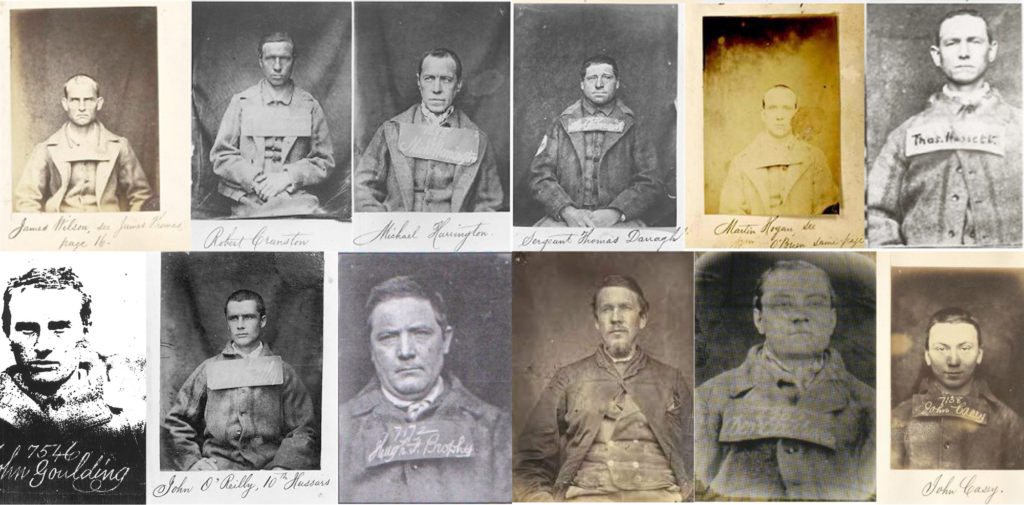
Michael Barrett, last man hanged in England for Fenianism—’68, for Clerkenwell’s blast. “Who fears to speak of ’98?” his echo in song. The Manchester Martyrs: Allen’s last words, “Fix the rope, lads—it’s the wrong side up.” Executions that executed empire’s myth of mercy. Fenian poetry? Kickham’s novels, O’Leary’s lays—literature laced with lead.
Famous Fenians? O’Mahony, the Gaelic ghost, translating Keating while plotting coups. Stephens, the “wandering hawk,” flitting from France to failure. O’Neill, Ridgeway’s rogue, raiding till rheumatism retired him. Women warriors: O’Leary sisters, Ellen’s elegies for the hanged. And the IRB’s iron core: Clarke, who bridged ’67 to ’16, his tobacco tin a testament to time.
Today? The Irish Republican Brotherhood today whispers in winds of Westminster protests, in GAA grounds where green flags flutter. A “new IRB” claims courts in Clare, shadow cabinets in Cork—fringe fire, but flickering. Kneecap’s film? A riotous romp, 70% true per Peppiatt: Belfast lads rapping in Gaeilge, dodging peelers and paramilitaries. Their flick? Fenian spirit in skinny jeans, C.E.Ó Grádaígh’s shade grinning from the grave.
How much of the Kneecap movie is true? Director’s dodge: “The wilder bits are real.” Naoise’s da, presumed IRA blast? Fact. The cop-shop standoff in Irish? Borrowed from a mate. Drugs, gigs, Georgia’s Protestant fling? Blurred lines, but the beat’s authentic—hip-hop hurling history’s hurley at hegemony.
The Fenian Flame Today: Echoes in the Emerald Diaspora
From Boston’s braes to Sydney’s shores, Fenian fire flickers. Clan na Gael, the Brotherhood’s bastard son, funded ’16 with Yankee yen. Modern Micks? Marching on St. Pat’s, tricolors tangled with shamrocks.
The slur? Still stings in soccer stands, but reclaimed in rebel chants: “Up the Fenians!”
In House of Guinness, Netflix’s pint-sized epic, Fenians lurk like leprechauns in the lager. Cochrane siblings, fictional firecrackers, clash with the black-stuff barons—protests at funerals, plots in parliaments. True? The IRB’s shadow looms large, but no Guinness gunpowder plot. Knight’s Knight-ian flair: Succession with shamrocks, Fenians as foil to froth.
Who are the Fenians in House of Guinness? Stand-ins for the starved and seething: Patrick, the powder-keg poet; Ellen, the emerald avenger. Inspired by O’Learys real, but ramped for drama—dynamite in drawing rooms, rebellion in the brewery.
FAQs: Unraveling the Fenian Enigma – Long Answers from the Lads Who Lived It
What are Irish Fenians?
Ah, what are Irish Fenians? Buckle up, for this is no quick catechism—it’s the saga of a nation’s snarling soul, etched in blood and ballad from the bogs to the barricades.
The Irish Fenians, ye see, were the thunderous offspring of famine and folklore, a secret society sworn to snap the Saxon shackles that strangled the Emerald Isle. Born in the belly of betrayal, post the Great Hunger of ’45-’52 that gnawed a million lives and spewed two more to exile’s embrace, the Fenians fused myth with mayhem.
At their core? The Fenian Brotherhood in America, sparked in ’58 by John O’Mahony—a Gaelic ghost from ’48’s failed fling—and Michael Doheny, both Young Irelanders with Young Turk tempers.
Across the Atlantic, James Stephens, the “wandering hawk,” hatched the Irish Republican Brotherhood (IRB) in Dublin’s dank dives on St. Patrick’s Day, same year. Oath-bound in shadows: “I swear… to make Ireland an independent democratic republic,” they’d murmur, fingers crossed on a pike or pistol. No king, no crown—just the people, pure and perilous.
Their game? Revolution, red in tooth and claw. Funded by Fenian fists in Yankee factories, arms smuggled in whiskey barrels, they plotted the ’67 Rising—a fizzling firecracker of skirmishes from Tallaght to Tallamore, crushed by Crown’s cavalry but kindling for ’16’s blaze. Raids on Canada?
Madcap masterpieces: ’66 at Ridgeway, O’Neill’s lads licking Brits in their first Irish win since Vinegar Hill. Eccles Hill ’70? A hail of local lead scattering the green horde. But oh, the legend! Fenians as folk heroes, their Fenian flag—green with 32 stars for the counties—a rip-roaring riposte to the Union Jack.
Were they terrorists or titans? British broadsheets bayed “bomb-throwers,” dynamite devils of the ’80s—Clerkenwell’s crater, Phoenix Park’s gore.
But to the tenant turf-cutters, evicted and embittered, Fenians were family: avengers of absentee lords, poets of the pike. Women wove their webs—Ellen O’Leary’s verses venomous as vipers—while lads like O’Leary edited The Irish People, ink igniting insurrection till Peelers pinched the press.
Legacy? The IRB’s invisible hand in Easter Week, Clarke’s tobacco tin ticking to the GPO’s fall. They birthed the IRA, sired Sinn Féin—threads in the tapestry of ’21’s treaty-tears. Today? Whispers in West Brit protests, a “new IRB” with shadow sham parliaments. Irish Fenians: not a club, but a curse on crowns, the unquenched quench for a republic raw and real. From famine’s forge to freedom’s fray, they’re the marrow in Ireland’s bone, the snarl in her song. Sláinte to the Fenians—may their fire never flicker out.
Are Fenians Catholic or Protestant?
Are Fenians Catholic or Protestant? Jaysus, that’s like asking if the sea’s wet or the devil’s damned—a question steeped in sectarian sludge, but let’s drain the bog and bare the bones. The Fenians? Overwhelmingly Catholic, lads and lasses from the Latin Mass multitudes, the rosary-rattling ranks ravaged by the Famine’s fang. But Protestant petals bloomed in their thorny bed, rare as four-leaf clovers, proving rebellion’s no one’s monopoly but the people’s prerogative.
Context first: 19th-century Ireland, a powder keg of Plantations and Penals, where Protestant ascendancy lorded over Catholic chattel. The Great Hunger? A Catholic cataclysm—potatoes for the papists, while Protestant ports shipped grain to greedy England.
Exiles to America? Mostly Mick and mass-goer, their diaspora dollars dollars doused in devotion. The IRB’s oath? “In the presence of Almighty God,” invoking the Trinity, but the Vatican? Vipers’ nest of vetoes.
Pius IX’s bulls branded ’em “oath-bound infidels,” bishops bellowing brimstone: Moriarty of Kerry thundered, “Eternity’s not long enough, nor hell hot enough!” Priests denied sacraments, confessionals became Crown confabs—yet the faithful flocked, faith fueling the fight.
Catholic core? Aye—recruits from the ragged ranks of Ribbonmen, the peasant pikes of ’98’s echo. O’Leary, Kickham, Stephens—all cradle Catholics, their cells scented with incense and intrigue.
The Ladies’ Committee? Devout dames smuggling shekels for the cause, Ellen O’Leary’s hymns harmonizing Hail Marys with hurley hurrahs. Even the dynamiters? Dublin’s devout, their blasts blessed in back-alley beads.
Protestants? Not phantoms. Some United Irish ghosts lingered—’98’s ecumenical embers. Figures like Isaac Butt flirted with Fenian fringes, though Home Rulers mostly. Rare birds: a Quaker or two, Methodists musing on liberty. But the bulk? Catholic congealed, their creed the Church of the Oppressed, masses muttering for a messiah in mitre or mask.
Why the wedge? Empire’s divide-and-conquer: paint Fenians as papist peril, Protestants as loyal lambs. Slurs stuck—”Fenian” flung at any Mick, masking the movement’s marrow: class war cloaked in creed. Today? The tag’s toxic in the Six Counties, a Protestant punch at Catholic kin. But history’s hammer: Fenians were Catholic-colored, not confined—rebels rising from the ranks of the ragged, rosary or no. In the end, faith was fuel, not fence; the Fenian fight for freedom’s feast, open to all with hunger in their hearts.
Who are the Fenians in House of Guinness?
Who are the Fenians in House of Guinness? Netflix’s nectar of the ’68 vintage, Steven Knight’s Succession-with-stout, brews a potent pint of fact and froth, where Fenians frolic as foes to the frothy four—Arthur, Edward, Anne, Benjamin Jr.—grappling Grampa’s ghost and the brewery’s burdens.
But who are these green-garbed gadflies in the drama’s dramatis personae? Fictional phantoms with factual fangs, stand-ins for the simmering stew of ’60s Ireland, where rebellion rumbled beneath the barley’s bounty.
Enter the Cochranes: Patrick (Seamus O’Hara), a powder-keg poet with a pike in his prose, leader of the local IRB cell, his eyes emerald embers plotting parliament’s perdition.
Ellen (Niamh McCormack), his sister-siren, pamphlet-pushing firebrand, her verses venom for the viceroy. Inspired by the O’Leary duo—John the IRB ink-slinger, Ellen the elegist of the executed—they’re Knight’s knitting of history’s loose threads: the Ladies’ Committee lasses smuggling sedition, the sibling synergy that sparked ’67’s sputter. Patrick’s the plotter, volunteering for Arthur’s assassination at a rally’s roar—dynamite in the demesne, a nod to the Invincibles’ ’82 slash.
Real roots? The IRB’s underbelly in post-Rising ’68: cells seething in Stepaside, sunburst flags fluttering in famine’s wake. No Guinness gunpowder plot—Edward was a unionist uncle, funding Ulster’s force—but Knight’s knight-errant twists: Fenians as family foils, their raids on the redoubt a metaphor for market mayhem. Byron Hedges (Jack Gleeson), bastard bridge of black stuff and balaclavas, brokers Boston bucks from Fenian fists—15% skim for the struggle, a fictional flourish on transatlantic ties.
The show’s Fenians? Caricature with claws: leprechaun lads in ludicrous green, per critics’ cackle, but channeling the chaos of Clerkenwell’s crater, the Manchester Martyrs’ noose. They protest Benjamin’s burial, disrupt Dublin’s docks, embody the emerald enmity against ascendancy’s ale. Fact?
The IRB loomed large, their ’67 embers still smoking; fiction?
The personal vendetta, the sibling slash at stout’s scepter. In Knight’s keg, Fenians are the fizz to the family’s flat—rebels raw, reminding that behind every pint pulses a people’s pain. Sláinte to the spectral Fenians of House of Guinness: may their myth mend the mendacity of memory.
What does it mean to be called a Fenian?
What does it mean to be called a Fenian? It’s a gauntlet thrown in a Galway gale, a grenade lobbed in a Larne lounge—praise from a paddy, peril from a Prod. To be dubbed Fenian is to wear the warrior’s weave, the Fianna’s frayed finery, but laced with the lacerations of lost centuries. Born of bardic beauty—the ancient bands of Finn McCool, hurling heroes who harried invaders—it morphed in the maw of modernity into a moniker of menace, a badge of the bold or a brand of the brute.
In the ’60s glow, it was glory: “Fenian” for the Brotherhood’s brethren, oath-takers in oak-paneled oaths, plotting pikes against the pale. O’Mahony’s minting, Stephens’ spark— a name to rally the ragged, the famine-forged. Called Fenian then? A call to arms, a comrade’s clarion, kin to the kilted clans of Culloden’s cry.
But empire’s echo twisted the term: British bulletins branded ’em bombers, “Fenian fiends” fomenting from the fen. Post-Rising reprisals, the slur slithered into sectarian slime—’20s riots ringing with “Fenian scum,” ’60s streets scarred by its spit.
In the Six Counties’ sectarian sieve, it’s a shibboleth for the Shinner, a scarlet letter for the taig: Catholics cataloged as Fenian fodder, their faith the fuse. Scotland’s sectarian soccer? Old Firm oaths hurl “Fenian bastards” like banshee bans, UEFA’s fines falling on deaf ears.
Yet reclaim it, ye rebels raw! In Westie wakes or Wolftone wakes, “Fenian” flies as flaunt: “Proud Fenian bastard” badges from Sinn Féin stalls, a thumb’s-up to the ’67 ghosts. Called Fenian? Means you’re marked: myth-made man, with Finn’s fire in your veins, famine’s fury in your fists. Offensive? Only if ownership’s stolen—own it, and it’s armor, the oppressor’s ogle turned outlaw’s oath. In the end, to be called Fenian is to be forever Fenian: free Ireland’s fierce facet, the snarl that says, “We’ve not forgotten, and we’ll not forgive.”
Are Fenians the IRA?
Are Fenians the IRA? Not twins, but the same bloodline’s brawlers—grandda’s ghost in grandson’s grin, the pike passed to the petrol bomb. No, the Fenians ain’t the IRA proper, but peel the onion of insurrection and you’ll weep the same salt tears: both bastard sons of Britain’s boot, both baying for the bone of a free republic. It’s evolution, not erasure; the Fenian flame forging the IRA’s forge.
Fenians: the ’58 vintage, IRB in Ireland, Brotherhood in Boston—oath-bound outlaws of the Ould Sod, O’Mahony’s myth-made militia. ’67 Rising? Their ragged rumble, Ridgeway raids their Yankee yelp. Crushed, but the corpse convulsed: IRB infiltrating the Volunteers, Clarke’s cell crafting ’16’s cataclysm. The IRA? Proclaimed in the GPO’s rubble, “Irish Republican Army” echoing the Fenian “Irish Republican Army” of ’66’s Canadian caper—O’Neill’s lads the first to flaunt the tag.
Differences? Decades and dirges. Fenians flirted with federalism—raiding Canada to ransom the homeland—while IRA’s intimacy was Irish: flying columns in Munster mists, ’21’s treaty-truce tango. Tactics? Fenians favored fiasco—dynamite duds, invasion idiocy; IRA honed the hybrid: hit-and-run honed to horror in the ’70s’ hunger strikes. IRB dissolved in ’24’s civil carnage, but its marrow migrated: MacBride’s IRA manifesto, de Valera’s devious dance.
Continuity? Crystal: Fenian vets like Childers christened the Cumann, their circles coiling in Collins’ squads. ’69’s split? Provisional progeny of the same pedigree—Official offshoots still singing Stephens’ song. Fenians vs IRA? A family feud, not fratricide: both baying “A Nation Once Again,” both branded terrorists by the Tory tide.
Today? IRA’s embers in NewIRA’s nods, but the Fenian fiber threads through: GAA grounds where green ghosts gather, ballads belting “Bold Fenian Men.” Called Fenians the IRA? Close as kin— the old oath’s echo in every “Tiocfaidh ár lá.” Not the same, but siblings in the strife, sharing the snarl of a shared saga.
How much of the Kneecap movie is true?
How much of the Kneecap movie is true? Rich Peppiatt’s riot, that raucous reel of Belfast’s bardic bad boys, claims 70% fidelity to the Fenian-fueled frenzy of the real McCoys—Móglaí Bap, Mo Chara, DJ Próvaí—but the director’s dodge is deliberate: “The wilder’s real,” he winks, leaving the line blurred like a bong hit in a blackout. It’s biopic with a bodhrán beat, true-ish tale of lads lobbing Gaeilge grenades at the ghosts of the Troubles, but laced with license like lyrics in a libation.
The core? Copper-fast: Kneecap’s genesis in ’17, Naoise and Liam Óg Ógáin—Westie wildlings, school skips turned spitfire spits—teaming with JJ Ó Dochartaigh, the teacher turned turntablist. Irish-only raps? Fact, a fuck-you to linguistic lashings, reviving teanga teo amid Tory taunts. The flick’s flash? Naoise’s da, Móglaí Eireann’s patriarch, presumed pulverized in an IRA blast—Michael Fassbender’s spectral stand-in—true torment, the ’90s bomb that birthed a boy’s bravado. The cop-shop standoff? Borrowed from a bandmate’s beef, Mo Chara’s Irish intransigence a thumbed nose at the peelers’ pidgin.
Drugs? Dialed down for the dream factory—real reels reeked of reefer and rave, but Hollywood halts the haze. Georgia’s Protestant paramour? Fictional frolic, but the film’s froth on forbidden fruit rings real: cross-community couplings in the ceasefire’s shadow, love lobbing grenades at grudge. The RRAD rumble? Radical Republicans Against Drugs, a real rabble-rouser’s beef—Kneecap’s ketamine kiss-offs clashing with puritan pikes, fists flying in Falls Road feuds.
70%? Peppiatt’s punt: the gigs, the Garda grilling, the Glastonbury glory—all gilt-edged gold. The school sacking? JJ’s jot, his classroom croon in cúpla focal costing his chalk. Controversy? Cead sílte: banned broadcasts buckling to protest, Dolores O’Riordan’s ghost grinning from the grave. The movie’s madness—balaclavas in the booth, buttocks branded “Brits Out”—mirrors the lads’ lore, but Peppiatt’s palette paints broader: a biopic that’s bardic ballad, true to the tumult if not the timetable.
In the end, Kneecap‘s truth? The thrum beneath: Irish as insurrection, hip-hop as hurley to hegemony. 70% fact, 30% flair—but the fire? Pure Fenian, flickering from famine’s forge to festival flames. Watch it, and you’ll whet your whistle for more: the real Kneecap’s catalog, a crash course in craic and conflict.
Who are the famous Fenians?
Who are the famous Fenians? A rogues’ gallery of rebels raw, these lads and lasses lit the leprechaun’s lantern against the long night of empire—oaths in their mouths, pikes in their paws, posterity in their pulse. From famine’s forge to freedom’s fray, here’s the honor roll of the IRB’s ironclad icons, the Brotherhood’s boldface brethren whose names echo like gunfire in the glen.
John O’Mahony: The Gaelic guru, ’58’s spark in New York’s murk. Young Irelander exiled, he minted the Fenian Brotherhood, translating Keating’s chronicles while coining the call: “Ireland a nation, by force of arms.” Scholar with a saber scar, his bonds bankrolled the bombs—died ’71, but his ghost grinned at Ridgeway.
James Stephens: The “wandering hawk,” IRB’s architect in Dublin’s damp. ’48’s fugitive, he toured the turf in ’58, swearing circles from Cork to Cavan. Escaped Kilmainham in ’66, a Houdini in homespun—fled to Paris, plotting from cafes. Founder-father, his fingerprints on every Fenian fuse.
Thomas J. Clarke: The bridge-burner, ’67’s vet to ’16’s vanguard. Five years in Fremantle’s fen, escaped on the Catalpa whaler—America’s amnesty for the audacious. Tobacco tin ticking time, he masterminded the GPO, IRB’s old oath in new ink. Hanged with his lads, but his legacy? The republic’s ruddy root.
John O’Leary: The ink-stained insurgent, Irish People’s editor, jailed ’65 for sedition’s sake. Parnell’s pal, Yeats’ muse—”Romantic Ireland’s dead and gone,” but O’Leary’s fire fanned it. Ellen’s brother, a duo of defiance—his cell scribbles sowed ’16’s seeds.
Ellen O’Leary: The petticoat poetess, verses venomous as vipers. Elegies for the Manchester Martyrs, funds funneled from Francy—Ladies’ Committee’s lace-gloved logistics. “Whether on the scaffold high” her hymn for the hanged—fame in the footnotes, but Fenian to the filigree.
John O’Neill: Ridgeway’s rogue, ’66’s Canadian conqueror. Union vet turned Fenian fox, 800 lads licking Brits at the border—first Irish win in seven score years. Raids ’til rheumatism reined him; died ’76, a raid too far.
Charles Stewart Parnell? Fringe Fenian, flirting with the fire—Home Ruler harnessed by IRB intrigue, his fall a Fenian fracture. Kickham, the novelist-knight, blind from boyhood but seeing the struggle clear. And the martyrs: Allen, Larkin, O’Brien—ropes that rallied republics.
Famous Fenians: not stars, but scars on the Saxon hide—oath-keepers whose obituaries outlived the empire. From O’Mahony’s oath to Clarke’s last volley, they’re the pantheon of the pike, the saints of the sunburst. Hail to the heroes, the Fenians forever famed in freedom’s fierce forge.
The Last Toast: Fenians Irish – Forever Unbowed, Unbroken
So there ye have it, the unvarnished ale of fenians irish: a saga soaked in sorrow and swagger, from Fianna’s fable to IRA’s inferno. We’ve waded the whiskey-warm words—Fenian Brotherhood‘s bold bonds, the Fenian flag‘s defiant drape, the slur’s sting and the spirit’s soar. Why Irish called Fenians? Because we’re the Fianna’s fierce heirs, famine-forged and freedom-famished. Catholic? Aye, but creed’s no cage. Offensive? Only to the oppressors’ ear.
The IRB today? A whisper in the wind, but the wind’s a whirlwind waiting. Fenians vs IRA? Brothers in blood, not rivals in the ring. And in Knight’s House, or Kneecap’s kinetic kick, the tale endures—rebellion’s rhythm, pulsing through pint and protest alike. Raise a glass, then— to the Fenians, those emerald enigmas, the eternal thorn in empire’s thigh. Sláinte mhór, mo chara: may their fire light your way, and their fight fuel your fire. The green flag flies, and the fight? Far from finished.



